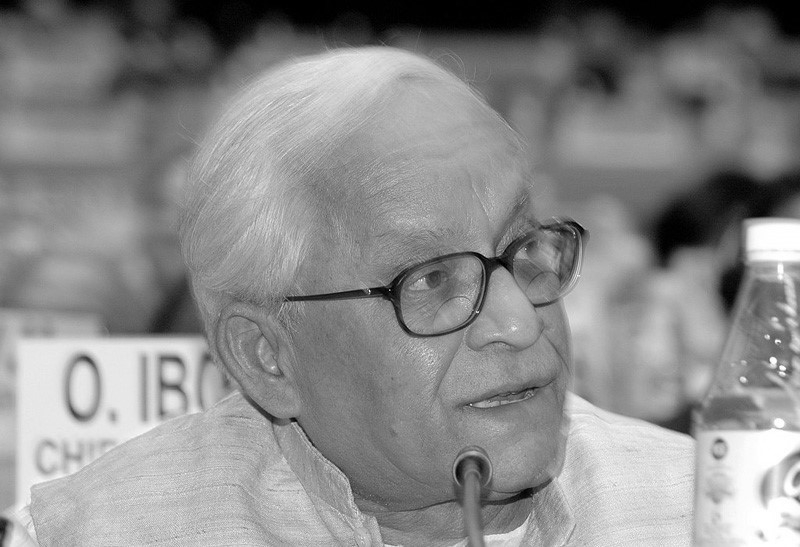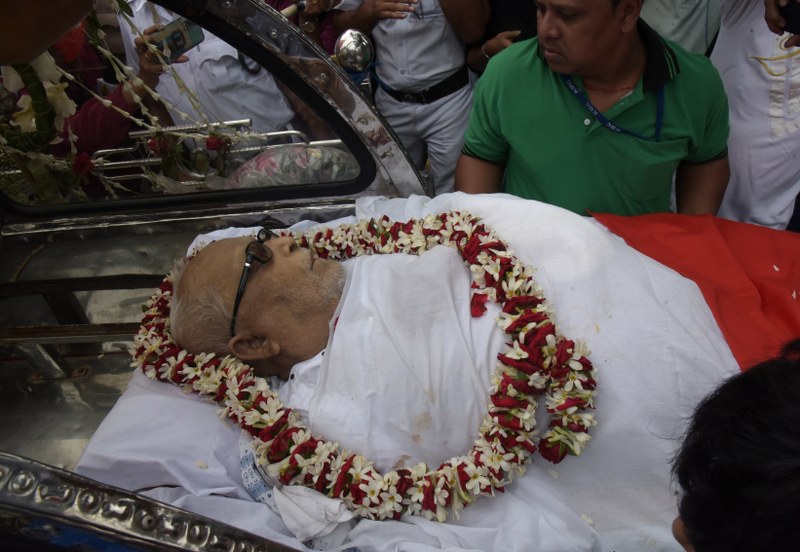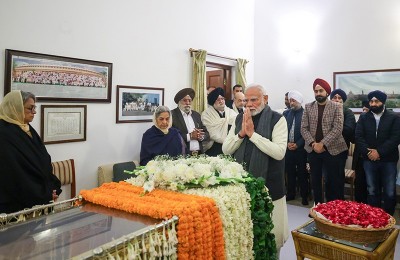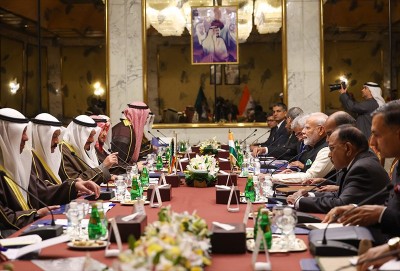 Communism
Communism
Buddhadeb Bhattacharjee: The life and time of a Red Romantic
“Patria o muerte” (Homeland or Nothing)! This is how Ernesto Che Guevara had ended his historic address (in Spanish) before the 19th United Nations (UN) General Assembly in December, 1964. The non-negotiable willingness to defend its sovereignty, the Argentine guerrilla leader had shaken the world with a romantic resolve, as the then Industry Minister of Cuba.
Cut to November, 2000 in India's eastern state West Bengal. The land of shutdowns and street protests saw another Red Maverik who became a born-again-champion of industrialisation in the communist-ruled province that was reeling under poverty and lack of industrial drive for over two decades.
His call for industrialisation was in contrast to the militant trade unionism of the leftist formations which virtually crippled the state’s once-thriving economy.
Being a flag-bearer of the controversial slogan ‘Unnototaro Baamfront’ (Better Version of the Left Front), Buddhadeb Bhattacharjee (1944-2024) had succeeded Communist patriarch Jyoti Basu after a 23-year tenure and eventually assumed office in November 2000 as the Chief Minister of West Bengal, much like a political misfit.
Bhattacharjee was a dreamer who, technically, lacked shrewd political acumen like his predecessor to rule the state. Rather, his romantic theories of industrialisation and honest approach towards politics had enchanted the state’s majority of voting population that catapulted him to power again in 2006, with a thumping majority.
The Left had secured 235 out of 294 seats in the state’s legislative Assembly turning West Bengal as one of the invincible Red bastions under the leadership of Bhattacherjee.
 Bhattacharjee lacked the shrewd political acumen of Jyoti Basu. Photo courtesy: Wikipedia
Bhattacharjee lacked the shrewd political acumen of Jyoti Basu. Photo courtesy: Wikipedia
The journey from left politics to Brand Buddha
Riding on the Y2K revolution, the dhoti-clad CM took active initiatives to welcome tech giants like Infosys, Wipro and many others to set up facilities at satellite township of Salt Lake Sector-V (the city's IT hub) located on the north-eastern fringes of Kolkata. The people of Bengal started to dream of an economically progressive state that could dawn a new era of industrial resurgence. The journey was like a dream-come-true for them.
Bhattacherjee's own political journey, however, began in the 1960s. He joined the Communist Party of India-Marxist (CPI-M) in 1966 as a student leader and was later elected as state secretary of the Democratic Youth Federation of India (DYFI) - the youth wing of the CPI-M. In 1972, he was elected to the state committee of CPI-M.
In 1977, Bhattacharjee was elected as a legislator for the first time from north Kolkata’s Kashipur-Belgachhia constituency and became the minister of information and public relations in Chief Minister Jyoti Basu’s cabinet.
In 1987, he won the assembly election from Jadavpur constituency in south Kolkata and re-inducted into the state cabinet as minister of cultural affairs, urban development and municipal affairs.
Following differences with Basu over the functioning of his government, flagging corruption, Bhattacherjee had stepped down in 1993 but returned to the cabinet a year later. In 1996, he became the minister of home affairs and three years after, he was promoted to the role of deputy chief minister as Basu planned to retire. And, this is how he came to the political forefront of Bengal, slowly becoming the last communist poster boy.
Bhattacharjee saw the brain-drain that happened in Bengal during the 60s and 70s at the time of violent Naxalite movement. As a result, Bhattacherjee’s sole intention, as the CM, was to create more employment opportunities for the youths in West Bengal, often going against his party-line.
He had promised to young people that he would bring jobs to their doorsteps. On numerous occasions people heard him voicing for the much-needed economic revolution of the state.
In one of his last interviews aired on a popular vernacular television channel in February, 2013, he had said: “I shudder to think where West Bengal is heading to. There is no industry, no opportunities. Students who are studying in school and colleges these days will have no future if there is no employment in the state. This is not a question of any particular political party - be it Trinamool Congress or CPI-M. We need to reach out to them and tell them about the importance of rapid industrialisation.”
Setting aside his party’s ideological beliefs, Bhattacherjee had left no stone unturned during his tenure to attract investors. From Jindal’s in West Midnapore’s Shalboni, Tata’s in Hooghly’s Singur to Indonesia-based Salim Group in East Midnapore’s Nandigram - it was the beginning of Bhattacherjee’s investment dream coming true.
And then came the ‘Save the Land Movement’
Plagued by violent anti-land acquisition movement, spearheaded by the state’s principal opposition Trinamool Congress and various people’s committees, Bhattacherjee’s every industrial move saw stiff political resistance.
Most of his big projects were eventually scrapped in the face of violent agitation. His ideological convictions to woo capital fell flat in a highly-polarised state that was not really ready for an industrial resurgence. And, the dreamer failed miserably in his attempt.
His allies also upped the ante against Bhattacherjee for his Maverik moves. The quintessential Bhadralok (Gentleman) chief minister was denounced both by his own party colleagues and the opposition for his aggressive industrial policies.
 Opposition led by Mamata Banerjee started a virulent campaign against the Nano project in Singur. Photo courtesy YouTube Screenshot
Opposition led by Mamata Banerjee started a virulent campaign against the Nano project in Singur. Photo courtesy YouTube Screenshot
At a time when the Singur and Nandigram anti-land acquisition movement was at its peak, Bhattacharjee had made an address to the central party units in West Bengal in February, 2007.
He had said: “The basic issue that involves the attitude of the opposition and of some others is that we need not proceed any further and stay in place. We do believe that if we try to stay in place and enjoy the success we have achieved we will stagnate and drift backwards. What then is the alternative?
“We have to note certain facts before dealing with the issue of industrialisation. In the economy of West Bengal, the share of agriculture is 26 per cent, industry 24 per cent, and services 50 per cent. This is better than the situation in other states…
"The trend of the service sector occupying a 50 per cent share of the economy is in keeping with that in the rest of the world. Look at the relative figures of the agricultural sector and the industrial sector. It is not correct to hold that this is the end of the road and the end of history. We must bring about changes gradually, and I use the word with deliberation. We must maintain food security but increase the share of the industrial sector, gradually reducing that of agriculture.”
He had also mentioned that under capitalism, in India, the expropriation of the land of the peasantry was taking place in a brutal manner. “In our drive for industrialisation in West Bengal, we will not proceed this way. We are committed to protect the interests of the farmers. If land needs to be taken, it will be done by providing those owning and dependent on land a fair deal, without coercion.” the then CM added.
But in a major setback, the Tata Motors, that was given 997.11 acres of multi-crop farmland by force at Singur for setting up their Nano car factory - billed as the world’s cheapest car, scrapped the Singur project and moved their plant to Gujarat's Sanand.
Post Nano departure, few back to back SEZ (Special Economic Zone) projects were dumped by the then state government, shattering the dreams of Bhattacharjee’s resurgent Bengal.
The outcome: The longest-serving communist regime faced a massive electoral debacle in 2011 and got toppled by Mamata Banerjee-led Trinamool Congress. The man with a dream silently eclipsed from the political limelight and took refuge in his two-room Palm Avenue government apartment, tucked away from the public glare.
The Final farewell
The era finally ended on August 8, 2024 as the CPI-M veteran died at 80, survived by his wife Meera Bhattacharjee and son Suchetan (a trans-man).
He was out of politics and was suffering from Chronic Obstructive Pulmonary Disease (COPD) and old-age related ailments. Bhattacherjee was under round-the-clock monitoring by the doctors at his Palm Avenue residence.
 The last journey. Photo courtesy: IBNS
The last journey. Photo courtesy: IBNS
The communist icon had donated his body for medical research to a state-run medical college and hospital.
Bhattacharjee had failed to fulfil his dream for West Bengal's industrialisation and lived in near blindness in the final days, but the dreams in his eyes will still live on. His cornea pledged for donation to the Regional Institute of Ophthalmology will bring back the eyesight of at least two visually-impaired people, according to media reports
As Bengal bids a teary farewell to its textbook communist icon, the question remains whether his dreams to industrialise Bengal will ever materialise paving a way forward for the next generation?
But perhaps the answer lies in an ode to dreamers like him by John Lenon:
You may say I'm a dreamer
But I'm not the only one

Support Our Journalism
We cannot do without you.. your contribution supports unbiased journalism
IBNS is not driven by any ism- not wokeism, not racism, not skewed secularism, not hyper right-wing or left liberal ideals, nor by any hardline religious beliefs or hyper nationalism. We want to serve you good old objective news, as they are. We do not judge or preach. We let people decide for themselves. We only try to present factual and well-sourced news.







